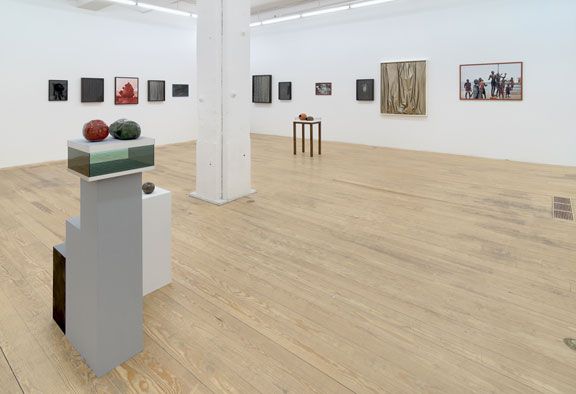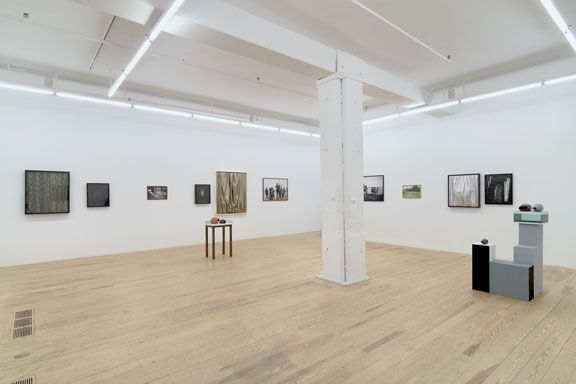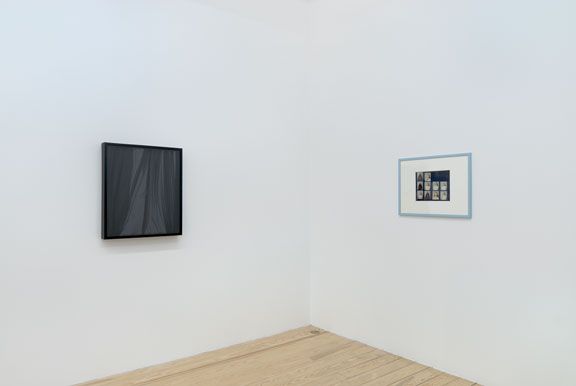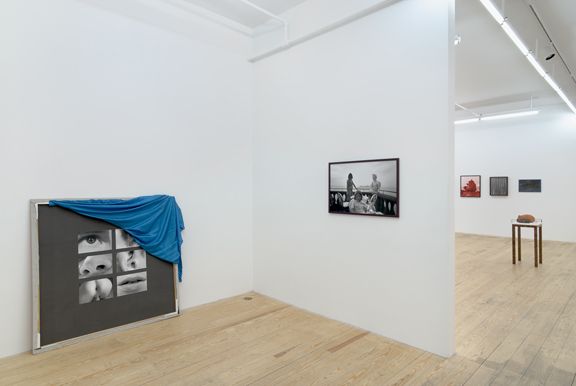Berlin-based artist SIMONE GILGES’ inaugural New York solo exhibition at Foxy Production integrates a diversity of images, forms and materials into an evocative whole. As interested in refusals and mystery as in revelation and transparency, Gilges fashions lyrical and affecting arrangements of photographs, textiles, and sculptures.
Gilges’ black-and-white, monochrome, and full color photographs cross continents, styles, and perspectives. Portraits, landscapes, and expansive outdoor crowd scenes, shot in Europe and Africa, alternate in scale from the intimate to the panoramic. Rural markets, indoor beaches, stormy mountain lakes, and family and solo portraits are presented in moody black-and-white, a documentary-style spectrum of color, or in vivid reds or greens. Her subjects, perspectives, colors, and treatments sustain a powerful reflection on the photograph, its exhibition, and reception: on what it can impart; what it may hold back; and what it can suggest within such a broad and diverse context.
Curtains are a recurring motif of the exhibition, often giving their subjects an eerie, spectral quality: they are superimposed on a portrait, using double-exposure; they are placed between a portrait and its glass; and they shroud a series of images of different parts of the body. There are photographs of curtains, and framed curtains, with and without glass, made from plain and patterned textiles sourced from Africa, Asia and Europe. The curtain, with its resonances of the theater and of domestic privacy, inflects the exhibition with drama, suspense, provocation, and irony. The fabrics hide as much as they reveal. Playfully questioning the documentary photograph’s claims to truth and realism, they open the stage to the spectator’s imaginings.
Gilges’ intricate images and materials are offset by clay sculptures in biomorphic, pod-like shapes. Resembling ancient pottery, some are unadorned and unglazed, while others are colored and highly glazed. Positioned on pedestals of varying sizes, together, they give the impression of a cityscape in miniature or of a series of incubators. Their placement and their primal, handcrafted styling suggest a universalism, a traversing of time and place, that sets the other works in the space and their myriad differences in relief. The exhibition’s juxtaposed images and objects become part of a dynamic series that allows its disjunctures and associations to run riot with the viewer’s imagination.
Credits
Installation photography by Mark Woods.




